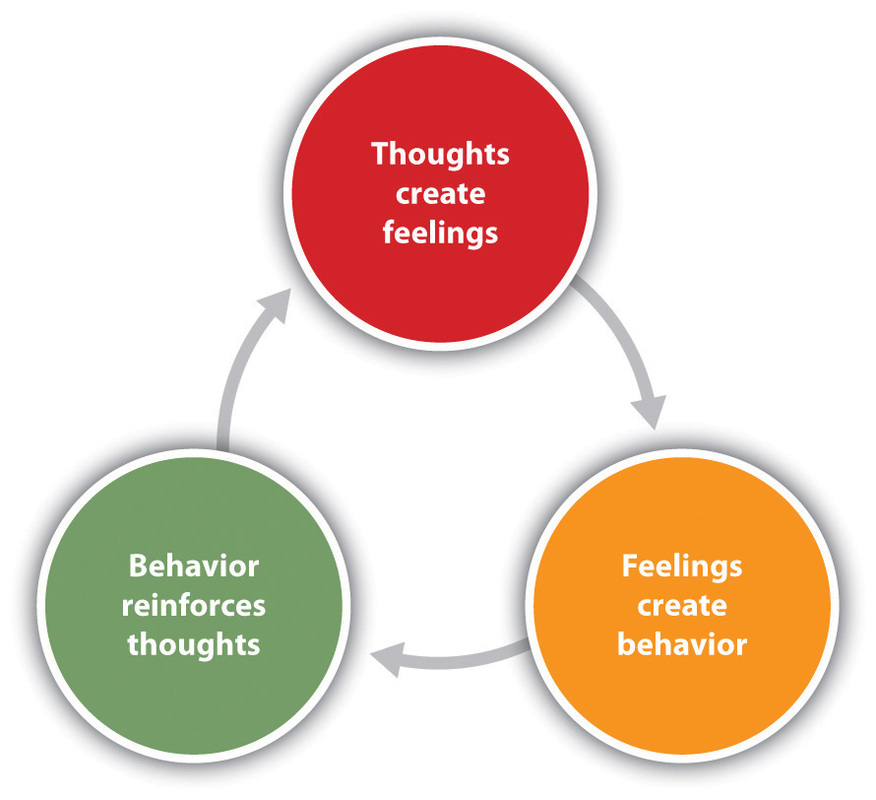
To all the dedicated parents and caregivers on this journey of love and support with your children on the autism spectrum – this article is for you. Understanding the nuances of the world of autism can be both challenging and rewarding. And one of the most impactful tools within your arsenal is Cognitive Behavioural Therapy (CBT). In this article, we’ll delve into the specifics of CBT, the similarities it shares with Applied Behaviour Analysis (ABA), and explore how they can be powerful tools in supporting children with autism.
What is Cognitive Behavioural Therapy?
Cognitive behavioural therapy is a structured, evidence-based therapeutic approach that focuses on understanding the connections between thoughts, feelings, and behaviours. It aims to help children identify and modify negative thought patterns and behaviours, leading to improved emotional regulation and functional skills. CBT can be an effective tool for children with ASD who have other associated mental health conditions, such as anxiety, attention deficit hyperactivity disorder (ADHD), and depression.
Characterized by two core facets, CBT includes cognitive and behavioural components. While the behavioural component helps children alter or modify how they react to a situation, the cognitive component helps them change how they perceive a situation. In essence, this short-term, problem-focused approach aims to teach children, as well as their parents, a variety of coping skills in order to help the child manage challenging scenarios.
Similarities Between CBT & ABA for Children with Autism

In comparison, the core objective of ABA therapy is to help children with ASD nurture important aptitudes, such as communication, social interaction, daily living tasks, academic abilities, and adaptive behaviors. By breaking down complex skills into manageable steps, ABA therapy facilitates steady progress and fosters independence in children on the autism spectrum.
Let’s take a closer look at the advantages, shared goals, and similarities between cognitive behavioural therapy (CBT) and Applied Behaviour Analysis (ABA) for children with ASD –
- Evidence-Based: Both CBT and ABA are evidence-based approaches, meaning they have a strong foundation rooted, in research and have demonstrated effectiveness in improving outcomes for children with ASD. While CBT focuses on reducing unwanted behaviors and modifying negative thought patters, ABA aims to build and reinforce positive skills and behaviors. Applied behaviour analysis (ABA) also helps children with ASD acquire essential life skills, such as communication, social interaction, and daily living skills.
- Goal-Oriented: Both therapies are goal-oriented, with specific objectives and targets established for each child. During CBT and ABA therapy, the child’s progress is continually monitored, and interventions are adjusted as required in order to achieve developmental goals. In essence, ABA is highly effective at breaking down complex behaviors or skills into smaller, achievable goals. This granularity allows for precise targeting of specific behaviors and skills, making progress more effective and manageable.
- Parent and Caregiver Involvement: Both CBT and ABA often involve parents and caregivers in the therapeutic process. In this regard, parents are taught strategies and techniques to support the child’s progress outside of therapy sessions. For example, ABA encourages active involvement from parents and caregivers, who are trained in ABA techniques and strategies. This allows them to support the child’s progress both in therapy sessions and in everyday life.
- Addressing Challenging Behaviors: Repetitive behaviours are common in autism; these may include difficulty with change, repetitive rituals, insistence on sameness, intense attachments, preoccupations, and interests. In this regard, both CBT and ABA can address challenging behaviors, although the behaviour analysts may approach it from different angles. Research suggests that CBT can help children understand these behaviours better and find healthier alternatives. Additionally, the approach helps in enhancing their engagement, while reducing stereotypical actions associated with ASD, as well.
- Structured and Consistent: ABA and CBT therapy significantly rely on structured and consistent approaches to teaching and reinforcement. This method can be particularly beneficial for children with ASD who thrive on routine as well as predictability. Likewise, ABA places a strong emphasis on measurable outcomes; progress is tracked using objective data, making it easier to assess the effectiveness of the therapy and make necessary adjustments.
In practice, the choice between CBT and ABA may depend on the specific needs and goals of the child, as well as the expertise of the therapist or behavior analyst. Often, a combination of both approaches may be used to provide a comprehensive and tailored intervention plan for children with autism spectrum disorder.
Traditional CBT tends to require strong linguistic as well as abstract thinking abilities, and these can be challenging for children on the autism spectrum. Realizing this, researchers are establishing significant efforts in order to develop modifications to CBT that render it more ASD-friendly, such as making it more visual and concrete. On the other hand, ABA entails more intensive and extended therapy sessions, which can be highly beneficial for children with significant challenges. The duration and intensity of ABA therapy can also be adjusted based on the child’s needs.
As parents and caregivers of children on the autism spectrum, you play a pivotal role in integrating ABA and CBT principles into their daily routines. Here are some tips to help you –
Stay Patient and Consistent: Progress might be gradual, but consistency is key. Remember, every small achievement is a milestone, and although setbacks may occur, it’s never too late to start afresh.
Create a Safe Space: Foster an environment where your child feels comfortable discussing their thoughts and feelings without judgment. This way, they will always have a safe place to go to, during times of overwhelm or meltdowns.
Collaborate with Professionals: Partner with experienced therapists who specialize in autism care, such as our experts at Early Autism Services (EAS). Ensure that you work closely with your child’s therapists and behavioural analysts to effectively reinforce these strategies at home.
Celebrate Small Wins: Acknowledge and celebrate each step of progress, no matter how small. Positive reinforcement encourages your child to keep trying. Whether it’s learning to tie shoelaces or eating with utensils, remember to celebrate these victories and cultivate a sense of encouragement and independence in your little one.
The impact of Applied Behaviour Analysis (ABA) goes beyond the surface. It’s not just about teaching and modifying skills or addressing behaviours; it’s about nurturing confidence, independence, and a sense of accomplishment in your child.
Every child with autism is unique, and what works for one child may not work for another. A qualified therapist, particularly those at Early Autism Services (EAS), will develop a personalized intervention plan tailored to your child’s needs, strengths, and challenges. This ensures that the therapy effectively aligns with your child’s individual developmental trajectory.
As you consider the best autism care provider for your child, we invite you to explore the exceptional services provided by Early Autism Services (EAS). Our expertise in integrating evidence-based practices, personalized support, and family collaboration will truly help cultivate a brighter future for your little one.
So, make sure you choose the best when it comes to Applied Behaviour Analysis (ABA) for your child on the autism spectrum and schedule a personalized consultation call with our experts.





Recent Comments